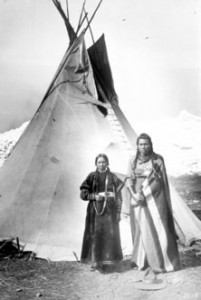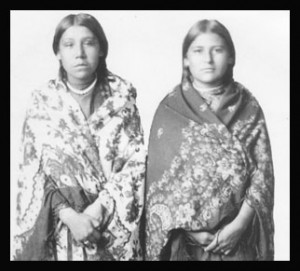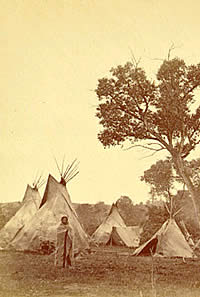Europeans found much to puzzle them when they first met Native American populations; the last two posts have discussed their surprise that Native Americans did not own property or animals. Europeans also misinterpreted Native American gender roles. Native American women were busy people. Women didn’t just tend a small kitchen garden, they farmed–planting, hoeing, and harvesting the village crops of corn, squash, and beans. On the Plains, Indian women also set up and dismantled tipis, collected firewood, preserved meat, took care of children, cooked, fetched water, and made clothing. It seemed like an enormous workload compared to the hunting men did (plus clearing fields for planting, completing religious and spiritual ceremonies, and war-making, among other tasks). Europeans normally observed men’s hunting role alone, and for this reason, frequently criticized Indian men as lazy, and Indian women as down-trodden and over-worked.
What Europeans seldom realized was that Indian women were more powerful than they appeared to be on the surface. Unlike European women who had few rights, Indian women often owned whatever possessions the family had. Women had the right to demand a divorce, and in a 180-degree turn from the European system, it was the male who was left without possessions. Rather than being patronized as delicate creatures with limited stamina and intellectual powers and prone to error and emotional bondage as European women were, Indian women were respected for their value to their villages. They were much more involved in village decision-making than their European counterparts, and often made life-and-death decisions concerning prisoners of war and adoption. Until Europeans forced cultural changes that transformed Indian society into the European mold, Indian women had an unusual degree of power.
______________________________________________________________________________________


